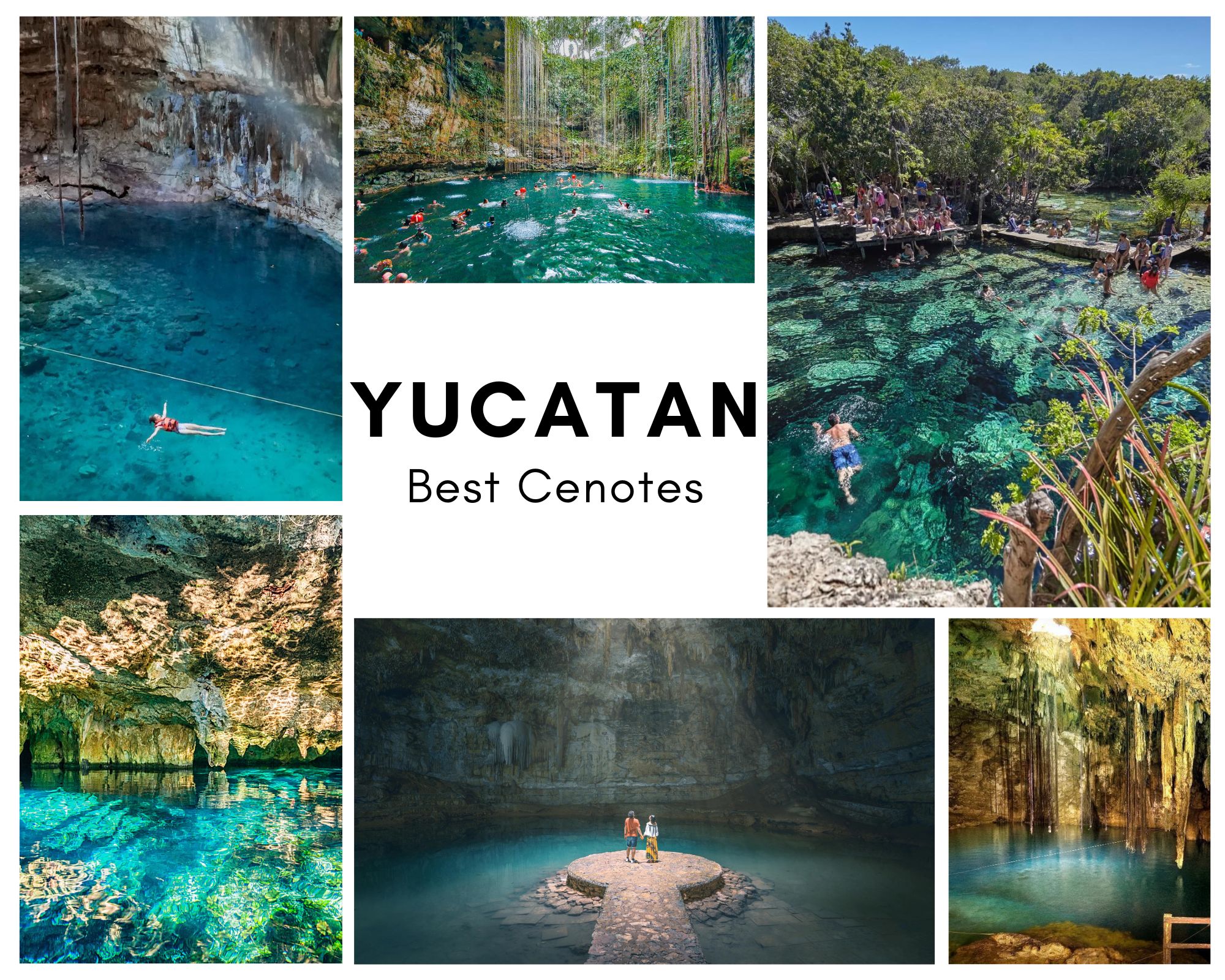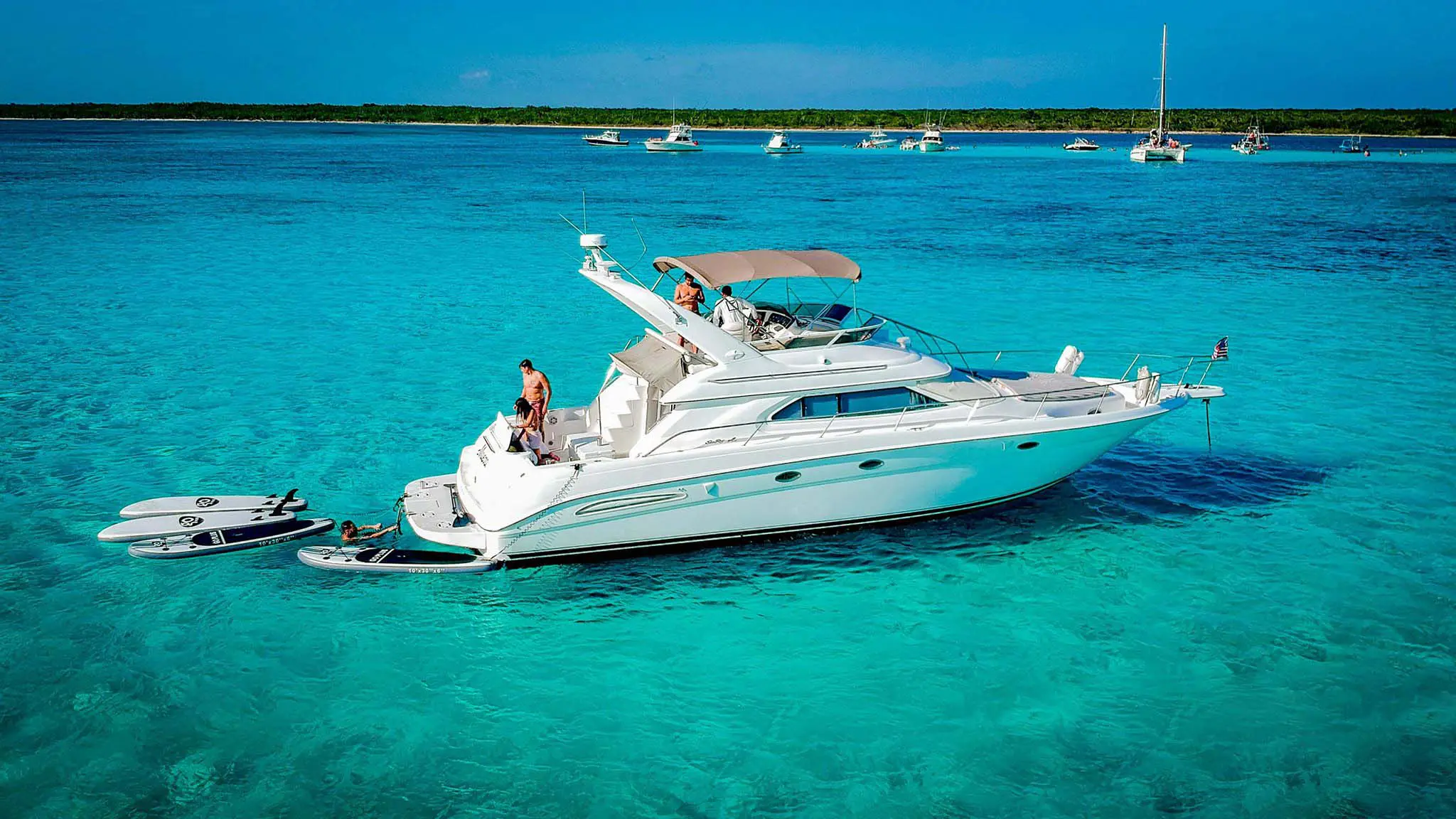Nestled within the Yucatan Peninsula, Mexico’s vast treasure trove of natural wonders lies a secret underground world of mystical, freshwater sinkholes known as cenotes. These age-old, limestone formations are Mother Nature’s own version of swimming pools, offering an otherworldly dip into the depths of Mayan history and mythology. Here’s a personal take on the 10 best cenotes near the Yucatan peninsula you must experience when you’re in the vicinity of the Yucatan.
What Is A Cenote?
Before plunging into the specific cenotes of the Yucatan, it’s essential to grasp what a cenote is and why it’s such a revered natural formation in this region.
A cenote (pronounced se-NOH-teh) is a natural sinkhole resulting from the collapse of limestone bedrock that exposes the groundwater underneath. This unique geological phenomenon is primarily found in the Yucatan Peninsula of Mexico. The word ‘cenote’ itself is derived from the Yucatec Maya word ‘dzonot,’ which means ‘well.’
These formations were not only essential water sources for the ancient Maya civilization but were also considered gateways to the afterlife. The Maya believed cenotes were entrances to Xibalba, the underworld, and as such, they held deep spiritual and ceremonial significance.
There are different types of cenotes:
- Open Cenotes: Resemble large ponds or lakes, open to the sky.
- Semi-Open Cenotes: Partly underground with a section open to the sky.
- Underground or Cave Cenotes: Yucatan caves are completely enclosed except for the entrance.
The presence of these cenotes in the Yucatan is due to the region’s unique geological makeup. The peninsula is primarily flat limestone, with a vast network of underground rivers flowing beneath. Over time, erosion creates these caverns and sinkholes, leading to the cenotes we see today.
Visiting a cenote, especially the ones in Mexico will give you a truly amazing experience. To make the best part of your trip, book a yacht rental in Tulum Mexico, and explore the amazing cenotes!
Now, with a deeper understanding of what cenotes are and their significance, let’s explore the cenote experience in Yucatan.
1. Ik Kil Cenote:
Depth: 26 meters
Highlights: Renowned for its circular shape and cascading vines, Ik Kil provides a magical setting, making it one of the best cenotes in Yucatan, Mexico. After navigating the carved stairway into its depths, visitors are greeted by clear waters populated with black catfish. Its proximity to the world-famous Chichen Itza archaeological site only adds to its appeal.
2. Gran Cenote:
Location: Near Tulum
Highlights: Its semi-open nature offers a tantalizing view of intricate underwater cave formations. The transparent waters, home to fish and turtles, provide an excellent environment for snorkelers and divers alike.
3. Cenote Dos Ojos:
Depth: Varies between chambers
Highlights: Named for its two massive chambers, or ‘eyes,’ this cenote is a diver’s paradise making it one of the top cenotes in Yucatan. The ‘Blue Eye’ presents a serene snorkeling environment, while the ‘Black Eye’ promises a more mysterious dive, suited for the experienced.
4. Cenote Samula:
Location: Valladolid
Highlights: Apart from the relaxing swimming environment, the hanging roots and the sunbeam slicing through the open ceiling transform Samula into an otherworldly realm.
5. Cenote X’keken:
Proximity: Next to Samula
Highlights: Also known as the ‘Pig’s Cenote,’ its backstory is rooted in a Mayan legend involving a pig that unveiled its presence. Its smaller dimensions make for a cozy, intimate experience.
6. Cenote Suytun:
Distinct Feature: Central Platform
Highlights: Visitors are often left spellbound by the solitary light beam illuminating a lone platform, creating an almost surreal reflection on the water, surrounded by stalactites.
7. Cenote Azul:
Location: Near Playa del Carmen
Highlights: Unlike many of its counterparts, Cenote Azul is an open freshwater pool where one can spend quality time at ease. Its transparency reveals its sandy bottom, making it a favored spot for both swimming and snorkeling amidst the tropical fish with an amazing view.
You can book a yacht at H2OH and get the best Playa del Carmen Yachts rentals to reach Cenote Azul.
8. Cenote Calavera:
Also Known As: Temple of Doom
Highlights: The cenote derives its name from its three ground openings that together resemble a skull. It’s a haven for those seeking a bit of adrenaline, offering opportunities for cliff diving. This is a go-to place if you want to do some adventure!
9. Cenote Zaci:
Location: Central Valladolid
Depth: Varies
Highlights: One of Valladolid’s prime attractions, this semi-open cenote combines the beauty of stalactites with the mystery of its deep, darker side. It’s perfect for both relaxed swimming and exploratory diving.
10. Cenote Jardin del Eden:
Location: Near Cenote Azul and Cristalino
Highlights: Aptly named the ‘Garden of Eden,’ this open-air cenote, surrounded by rocks and verdant greenery, beckons visitors to jump from its edges into the cool embrace of its waters.
Why Cenotes Are Unique
These natural sinkholes are the result of collapsed limestone bedrock, revealing the pristine groundwater beneath. For the ancient Maya civilization, these cenotes were sacred sources of fresh water and held profound spiritual significance. Today, they serve as iconic spots for adventure lovers and those seeking solace in nature.
Things to Do at A Cenote
Cenotes, with their striking beauty and tranquil ambiance, are not just places to see but offer a range of activities that can be both thrilling and calming. Here’s a comprehensive list of things to do when you visit a cenote:
1. Snorkeling:
- Experience: Snorkeling is perhaps the most popular activity in cenotes. The crystal-clear waters allow you to observe the intricate limestone formations, unique aquatic life, and other hidden treasures below the surface.
- Gear: While some cenotes offer rental equipment, you can also bring your own for a personalized experience.
2. Scuba Diving:
- Explore the Depths: For the more adventurous, diving into the cenote’s depths lets you explore its vast underwater cave systems. This activity is particularly famous in cenotes like Dos Ojos.
- Certification: Remember, you’ll need to be certified, and it’s best to dive with a local guide who knows the cave systems.
3. Photography:
- Capture the Moment: The play of light and shadow, the azure waters, and the surrounding foliage make cenotes a photographer’s paradise. Whether you’re into underwater photography or scenic shots, there’s plenty to capture.
- Respect Privacy: Just ensure you’re considerate and don’t interrupt the experience of others when taking photos.
4. Cliff Jumping:
- Adrenaline Rush: Some cenotes, like Cenote Calavera, offer opportunities to jump from heights into the waters below. It’s an exhilarating experience but should be undertaken with caution.
- Check Depths: Always ensure the area you’re jumping into is deep enough and free from obstructions.
5. Kayaking or Canoeing:
- Tranquil Paddle: In larger, open cenotes, you might find options to rent kayaks or canoes. It’s a peaceful way to explore the cenote from a different perspective.
6. Relaxation:
- Nature’s Spa: Take a moment to float on your back, listen to the sounds of nature, and let the cenote’s waters rejuvenate your spirit.
- Picnic: Some cenotes have adjacent areas where you can set up a picnic. Enjoy a meal amidst nature, but remember to clean up afterward.
7. Cultural Exploration:
- Local Legends: Engage with local guides to learn about the myths, legends, and historical significance associated with the cenote. The stories can enrich your understanding and appreciation.
- Ceremonial Sites: Some cenotes were used for Mayan ceremonies. If you visit such a cenote, take a moment to reflect on its spiritual significance.
8. Bird Watching:
- Diverse Avifauna: The lush environments around cenotes often attract various bird species. If you’re a bird lover, don’t forget your binoculars!
Things to Remember When Visiting Cenotes
Cenotes are unique natural wonders, but they are also sensitive ecosystems and culturally significant sites. When visiting these breathtaking formations, it’s essential to keep in mind certain guidelines to ensure that you have a safe, respectful, and enriching experience. Here are some crucial points to remember:
1. Environmentally Conscious Behavior:
- Chemical Impact: Refrain from using sunscreens, lotions, or insect repellents before swimming in cenotes, as they can contaminate the water and harm the delicate aquatic life.
- Waste Management: Ensure you don’t leave any trash behind. Pack out whatever you bring in to preserve the pristine environment of the cenotes.
2. Safety Precautions:
- Life Jackets: Even if you are a strong swimmer, some cenotes can be deeper than they appear. Wearing a life jacket can ensure your safety.
- Guided Tours: If you plan on diving or exploring more complex cenotes, always do so with a certified guide. They can lead you safely through the caves and tunnels while also sharing valuable insights.
- Footwear: The areas around cenotes can be slippery. Wearing water shoes can help you navigate the wet surroundings without slipping.
3. Respect the Sacred:
- Cultural Significance: Remember that for the Mayans, cenotes held profound spiritual importance. Some were used for rituals and ceremonies. Approach these spaces with reverence and respect.
- Limit Noise: Keep the noise levels down. Not only is it a sign of respect, but it also allows everyone to enjoy the tranquil ambiance.
4. Preservation:
- Flora and Fauna: Avoid touching or disturbing the aquatic life and the unique stalactites and stalagmites formations.
- Limit Impact: Stick to designated paths and swimming areas. The less we disturb the natural environment, the longer these wonders will last.
5. Prepare for the Journey:
- Cash: Many cenotes are in more remote areas where card machines might not be available. It’s a good idea to carry enough cash for entry fees or any other necessities.
- Hydration: The tropical climate can be sweltering. Always bring water with you to stay hydrated, especially if you plan on swimming or diving.
6. Time Your Visit:
- Avoiding Crowds: To experience the cenotes in their full serene glory, try visiting early in the morning or later in the afternoon when they are less crowded.
- Weather: Some cenotes might be affected by heavy rains, making them less clear or accessible. It’s always wise to check weather conditions before heading out.
7. Local Customs:
- Engage with Locals: Engaging with local communities or guides can provide enriching insights about the cenote’s history, legends, and significance.
- Tipping: If you take a guided tour or receive assistance, tipping is a courteous gesture to appreciate the services provided.
Wrapping Up
Each cenote has its unique charm, history, and allure. From those perfect for a tranquil swim to ones that promise an adrenaline-pumping dive, the Yucatan Peninsula offers a cenote for every kind of traveler. As you delve into these liquid chambers of history, each splash echoes tales from centuries past, and each swim is a dive into the heart of an ancient civilization’s spirit.
With H2OH, you can easily go for a yacht rental in Riviera Maya and have an amazing experience while exploring cenotes!








